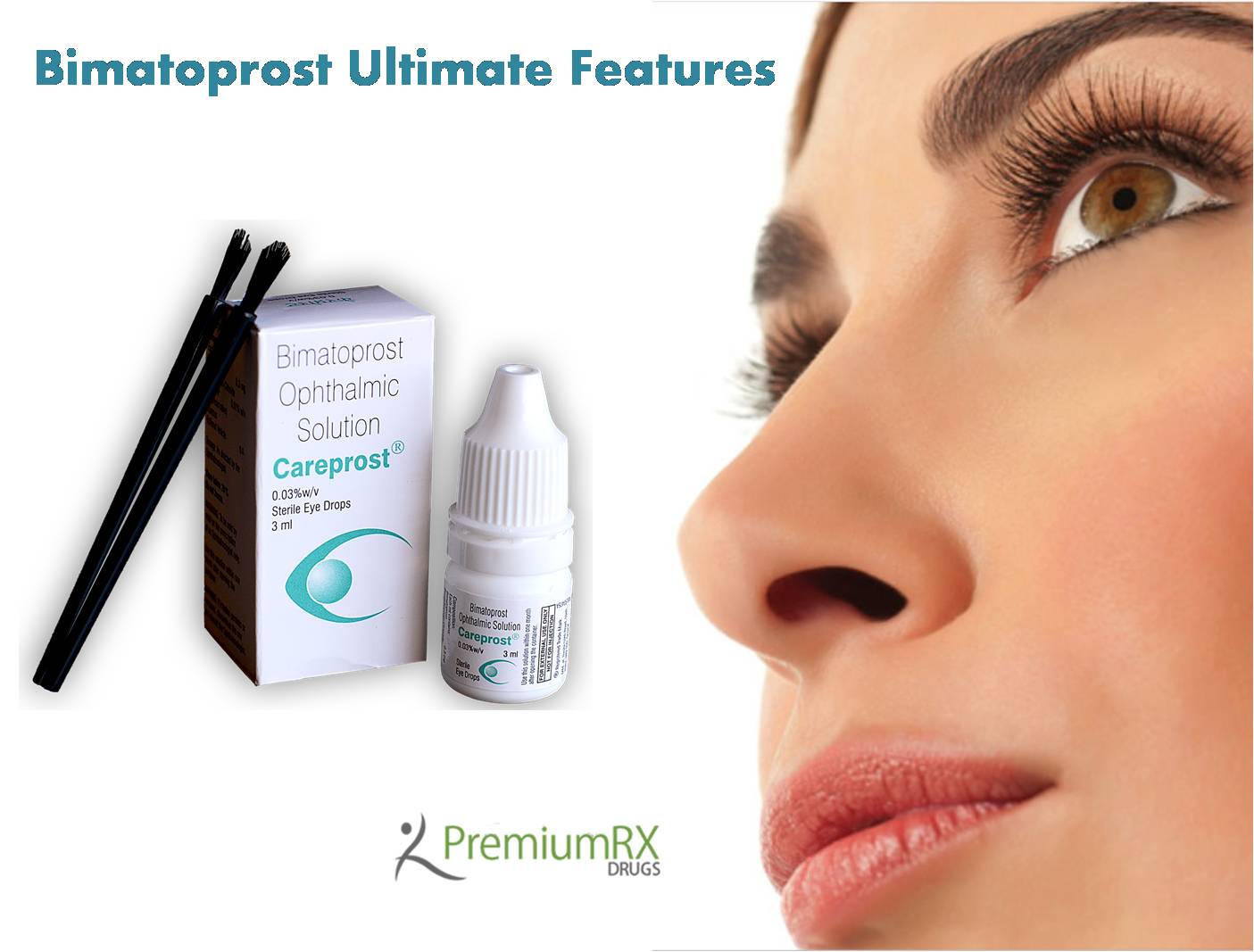Bimatoprost ophthalmic solution is an eyecare product effective at lowering intraocular pressure (IOP) in patients suffering from open-angle glaucoma and ocular hypertension and cosmetically to treat hypotrichosis of eyelashes. It is classified under the class of drugs known as prostaglandin analog. The product has received approval from the FDA (United States Food and Drug Administration) since 2001 as a treatment to lower IOP. Studies suggest that topical bimatoprost is among the most effective drugs for reducing IOP in the eyes in patients with primary open-angle glaucoma and ocular hypertension. Lash growth is a well-documented adverse effect of bimatoprost during the treatment of glaucoma. Bimatoprost 0.03% ophthalmic solution is also often purchased over the counter (OTC) as an ophthalmic product for cosmetic purposes due to the effects of longer, darker, and fuller eyelashes.
When used to lower IOP once daily, dosing is recommended. Bimatoprost may be used alone or concomitantly with another medication, such as timolol, once the daily solution is applied to the upper eyelid. It has been studied extensively as an effective strategy for enhancing eyelash growth.
Working Mechanism
Reduction of Intraocular pressure
It has been widely known that bimatoprost and several topical prostaglandin analogs effectively reduce IOP and are described as first-line treatment of open-angle glaucoma. It happens primarily through enhancing aqueous outflow through the uveoscleral pathway. It has been shown that lowering IOP in individuals with ocular hypertension and glaucoma may reduce the risk of progression of disease.
Enhancement of lash growth
The ability of bimatoprost to grow lashes was initially observed during glaucoma clinical trials to understand the potential to reduce eye pressure within the eye. Studies demonstrated that with 14 14-day courses, a more significant proportion of follicles were in the hair lash growth cycle’s anagen (growth) phase and decreased proportion in the telogen (resting) phase, suggesting an increased transition from resting to growth phase. This shows that an increased proportion of follicles in the growth phase allows for the observable enhanced growth of lashes with this ophthalmic solution.
The FDA has approved bimatoprost in a 0.03% solution for increasing lash length, thickness, and darkness in patients with hypotrichosis of the eyelashes. For growth of lashes, a single drop of bimatoprost ophthalmic solution is taken on a single-use applicator and applied on the upper lash line along the roots of the eyelashes once a night; a new applicator should be used for each eye.
Administration
Two bimatoprost ophthalmic 0.03% solution administration methods depend on the intended effects.
Applying for open-angle glaucoma
Bimatoprost ophthalmic solution 0.03% may be used as an eye medicine applied directly to the ocular surface. Usually, one drop is administered every evening, although the dose may vary depending on the ophthalmologist’s dosing. The patient must wait at least five minutes between administering bimatoprost and other ophthalmic solutions. With the eye drop, the reduction of IOP should begin after four hours, and the full effect will be seen at twelve hours but will maintain the reduced IOP through 24 hours.
Applying for hypotrichosis
Bimatoprost ophthalmic solution is most widely used and associated with increased growth and appearance of fuller lashes with once-daily application. It is popularly sold under the brand name Careprost. It is an eye drop for the treatment of sparse and inadequate lashes. The eyelash growth solution is commercially available as an ophthalmic solution with an applicator. Before application, you should remove contact lenses. For growth of lashes, it should not be applied directly to the eye. Every evening, a single drop is applied to the single-use per-eye applicator and then brushed from the inner wards to outwards against the base of the upper lash line. The applicator is to be used with only one eye to prevent contamination. Research reports suggest that the product must be applied for at least sixteen weeks for maximum lash growth.
Side effects
Numerous research studies have demonstrated the high levels of safety and tolerance of bimatoprost ophthalmic solution when applied to the ocular surface. The most commonly reported side effects include conjunctival hyperemia, dry eye syndrome, eye pruritus, visual disturbances, eye pain, visual disturbances pigmentation of eyelid margins, and foreign body sensations. Bimatoprost 0.03% eye drop has also been associated with the alteration of iris pigmentation.
The bottom line!
Bimatoprost ophthalmic solution is one of the most effective first-line treatments for both open-angle glaucoma and hypotrichosis of eyelashes. However, successful treatment of glaucoma is highly dependent on the efforts of your healthcare provider, who monitors you with consistent eye drop use.
Marie
Latest posts by Marie (see all)
- Eyelash Goals Unlocked: Why Careprost Is the Ultimate Solution. - June 30, 2025
- Clopidogrel 75mg : Uses, Dosage, Side Effects, Interactions & More - June 30, 2025
- Glipizide and Metformin: Uses, Dosage and Side effects in humans - June 27, 2025




